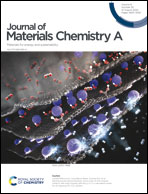Hybrid cocatalysts in semiconductor-based photocatalysis and photoelectrocatalysis
Abstract
Photocatalysis and photoelectrocatalysis have been recognized as promising strategies to simultaneously address energy crisis and environmental pollution. Semiconductor-based photocatalysts and photoelectrocatalysts often suffer from shortcomings including the serious recombination of photogenerated charge carriers and sluggish kinetics of surface reaction, which can be overcome by the surface modification with suitable cocatalysts. Nevertheless, it is often difficult to simultaneously achieve all the good characteristics of an ideal cocatalyst with a single-component material. Thus, hybrid nanostructures consisting of different components have been fabricated as robust cocatalysts, which compensate the disadvantages of mono-component cocatalysts and produce synergistic effects for improved photocatalytic and photoelectrochemical (PEC) performance. In this review, the developments of hybrid cocatalysts over semiconductor-based photocatalysis and photoelectrocatalysis are described. The functions and architectures of hybrid cocatalysts are also discussed, and the synergistic principles of different components in these cocatalysts are elucidated. Furthermore, the applications of hybrid cocatalysts in various photocatalytic/PEC reactions are summarized and finally, the remaining challenges and future perspectives of hybrid cocatalysts are also presented.



 Please wait while we load your content...
Please wait while we load your content...